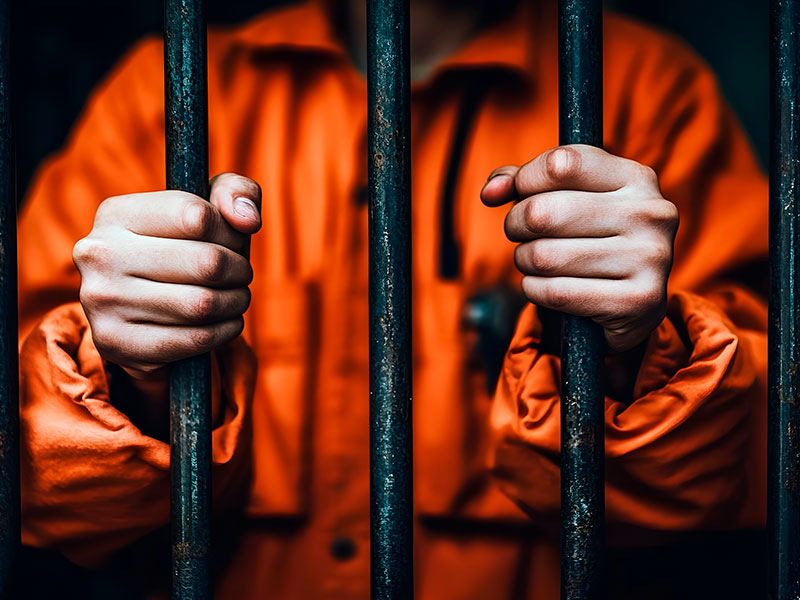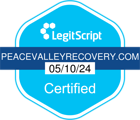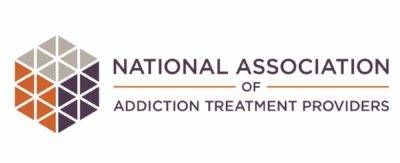Economic Cost of Addiction in Philadelphia
![]() | 4.9 Google Reviews
| 4.9 Google Reviews
![]() | 4.9 Google Reviews
| 4.9 Google Reviews
Peace Valley Recovery is located in Bucks County, Pennsylvania. Our mission is to provide patient-centered care that focuses on healing and recovery from addiction. This blog provides information, news, and uplifting content to help people in their recovery journey.
Authored by Chris Schumacher | Medically Reviewed by Dr. Elizabeth Drew,
Last Updated: April 8, 2025
Addiction is more than a personal struggle. It affects families, workplaces, healthcare systems, and entire communities. In Philadelphia, the consequences of substance use disorders are visible in overcrowded emergency rooms, overwhelmed law enforcement agencies, and lost productivity in the workforce. The financial burden is staggering, costing the city hundreds of millions of dollars each year in medical expenses, crime-related costs, and economic losses.
One thing to bear in mind is that behind every statistic is a person, whether that’s a parent, a sibling, or a friend, whose life has been disrupted by addiction. In 2023 alone, Philadelphia saw 1,315 overdose deaths, according to the Pennsylvania Department of Health. A staggering 79 percent of those overdose deaths included fentanyl. As you can see, the cost is not just measured in dollars but in lives lost, families broken, and communities struggling to recover.
Understanding the financial toll of addiction is critical for policymakers, business leaders, and residents who want to see change. By looking at the numbers, we can better grasp the scale of the crisis and recognize the urgent need for solutions. Addressing addiction is not just a matter of public health; it is an economic necessity for the future of Philadelphia.
Addiction’s Economic Impact on Philadelphia
Philadelphia, like much of the country, is grappling with the devastating effects of addiction. The opioid crisis has disproportionately affected the city, with Philadelphia leading Pennsylvania in opioid-related deaths. The economic impact of addiction has a lasting effect on the city’s resources, businesses, healthcare, and social services, which we’ll examine below.
Healthcare Costs are A Heavy Burden
Addiction-related healthcare expenses place a significant burden on Philadelphia’s medical facilities and government-funded programs. In 2017, Pennsylvania spent $53.77 billion to address the opioid crisis, and a substantial portion of that cost is borne by cities like Philadelphia.
The state’s healthcare spending includes emergency room visits, hospitalizations for overdose victims, long-term rehabilitation services, and mental health treatments. The cost of opioid-related emergency room visits in the city is substantial, reaching millions each year.
Philadelphia recently experienced an increase in opioid overdose deaths that led to an increase in emergency services, medical treatment, and hospital admissions. Each overdose requires immediate medical attention, often in an emergency room where critical resources are required. As the numbers of addiction-related incidents grow, so too do the financial burdens on healthcare providers, who struggle to meet the increasing demands for care.
Lost Productivity and Employment Costs
One of the most far-reaching impacts of addiction in Philadelphia is the loss of productivity in the workforce. Employees struggling with addiction are more likely to miss work, show up late, or underperform. As a result, businesses experience a loss in productivity and increased costs in terms of employee assistance programs, health insurance, and workers’ compensation claims.
Substance abuse also reduces employability in the long term. Individuals with addiction may experience prolonged periods of unemployment or underemployment, further straining public assistance programs.
In Philadelphia, the opioid epidemic has left many families struggling with unemployment or low wages, as addiction hinders their ability to secure stable jobs. It also limits their capacity to contribute to the local economy, creating a cycle of poverty and addiction that is hard to break. As unemployment rates rise, so does the pressure on social welfare programs, putting even more strain on city and state resources.

Criminal Justice Costs are like Fighting an Uphill Battle
The criminal justice system in Philadelphia is heavily burdened by addiction. Individuals struggling with substance abuse are disproportionately involved in the criminal justice system, either through drug-related offenses or crimes committed to feed their addiction. Between 2007 and 2016, total costs to the Pennsylvania criminal justice system were over $526 million, with a significant portion of this money directed toward drug-related offenses and addiction treatment programs for those in the system.
In Philadelphia, the cost of addiction-related crime is equally as bad. Drug-related arrests account for a significant percentage of the city’s overall arrests, creating a backlog of cases that further strains local law enforcement. Drug offenses often result in long-term incarceration, putting additional pressure on the prison system and adding to the cost of maintaining jails and detention facilities.
Even more troubling is the fact that many people with addiction end up cycling in and out of the justice system, as they are arrested for low-level drug offenses but fail to receive effective rehabilitation. Without access to addiction treatment and recovery programs, these individuals are more likely to reoffend, leading to ongoing costs for both the city and the taxpayers.
How the Costs Compare: Philadelphia vs. the U.S.
To truly understand the financial toll of addiction in Philadelphia, it is important to compare it to national statistics. Addiction costs the U.S. more than $740 billion every year. In Philadelphia, the impact is concentrated in specific areas, making the costs even more pronounced.
- Healthcare: Nationally, healthcare costs related to addiction amount to billions of dollars each year. In Philadelphia, the city’s Department of Public Health spends millions on treating addiction and its related health issues. With overdose deaths increasing each year, the cost of treating addiction continues to rise.
- Workforce Productivity: Nationally, substance abuse costs the U.S. economy more than $193 billion in lost productivity. In Philadelphia, the opioid epidemic has had a particularly severe impact on the workforce, with many individuals unable to maintain steady employment due to their addiction.
- Criminal Justice: While the national cost of criminal justice issues related to addiction are in the billions, Philadelphia experiences a disproportionate impact due to its high rates of drug-related crime. The city spends a significant amount of resources on law enforcement, incarceration, and drug rehabilitation programs within the criminal justice system.

In comparison to national averages, Philadelphia’s addiction crisis costs are concentrated, which amplifies the financial strain on the city.
How To Address the Economic Impact of Addiction in Philadelphia
Philadelphia’s addiction crisis places a heavy financial burden on healthcare systems, law enforcement, and local businesses. Addressing these costs requires a long-term strategy that prioritizes treatment, prevention, and recovery support.
Expanding Access to Treatment
One of the most effective ways to reduce the financial impact of addiction is to increase access to treatment. Research shows that every dollar spent on addiction treatment saves at least four dollars in related costs, including healthcare expenses and lost productivity. Expanding inpatient and outpatient treatment programs, increasing access to medication-assisted treatment, and improving insurance coverage for addiction services can help reduce overdose deaths and lower overall costs.
Long wait times, limited treatment availability, and financial barriers prevent many people from getting the care they need. Without treatment, addiction often worsens, leading to more emergency room visits, hospital stays, and interactions with law enforcement. By investing in more treatment options, Philadelphia can ease the strain on public resources and improve long-term outcomes for those struggling with substance use disorder.
Strengthening Prevention Efforts
Preventing addiction before it begins is key to reducing its economic toll. Many substance use disorders start in adolescence, making early education programs critical. Schools, community organizations, and healthcare providers can work together to teach young people about the risks of substance use and provide healthy coping strategies.
Community-based prevention programs also play an important role. Expanding access to mental health services, supporting at-risk populations, and providing harm reduction services can help prevent addiction from developing. Addressing factors like trauma, unemployment, and housing instability can reduce the likelihood of substance use disorders, ultimately lowering the financial burden on the city.
Supporting Long-Term Recovery
For those in recovery, ongoing support is essential to maintaining sobriety and preventing relapse. Without stable housing, employment opportunities, and a strong support network, many individuals fall back into addiction, leading to repeated hospitalizations or incarceration.
Investing in sober living homes, recovery coaching, and employment assistance programs helps individuals reintegrate into society and maintain long-term stability. By providing access to recovery resources, Philadelphia can reduce homelessness, decrease crime rates, and keep more people in the workforce.
A Sustainable Solution for Philadelphia
The economic cost of addiction is unsustainable. Without intervention, the city will continue to face rising healthcare expenses, increased crime, and lost productivity. A comprehensive approach that prioritizes treatment, prevention, and recovery support will not only save lives but also reduce financial strain on public systems. Investing in solutions now can create a healthier, more stable future for Philadelphia.
Peace Valley Recovery Can Help Philadelphia Break the Cycle
Urban rehab centers can sometimes feel overwhelming due to the fast-paced city environment, which may distract from the focus on recovery. The high demand for services can also lead to longer wait times and less individualized attention, so it’s important to weigh these factors when considering the best setting for your recovery journey.
You May Also Like to Read
What Long-Term Impact Has COVID-19 Had on Mental Health?
What Long-Term Impact Has COVID-19 Had on Mental Health? Authored by Chris Schumacher | Medically Reviewed [...]
How Social Media Affects Mental Health
How Social Media Affects Mental Health Authored by Chris Schumacher, | Medically Reviewed by Dr. Elizabeth Drew, [...]
Technology’s Impact on Mental Wellness
Technology's Impact on Mental Wellness Authored by Chris Schumacher, | Medically Reviewed by Dr. Elizabeth Drew, Last [...]








